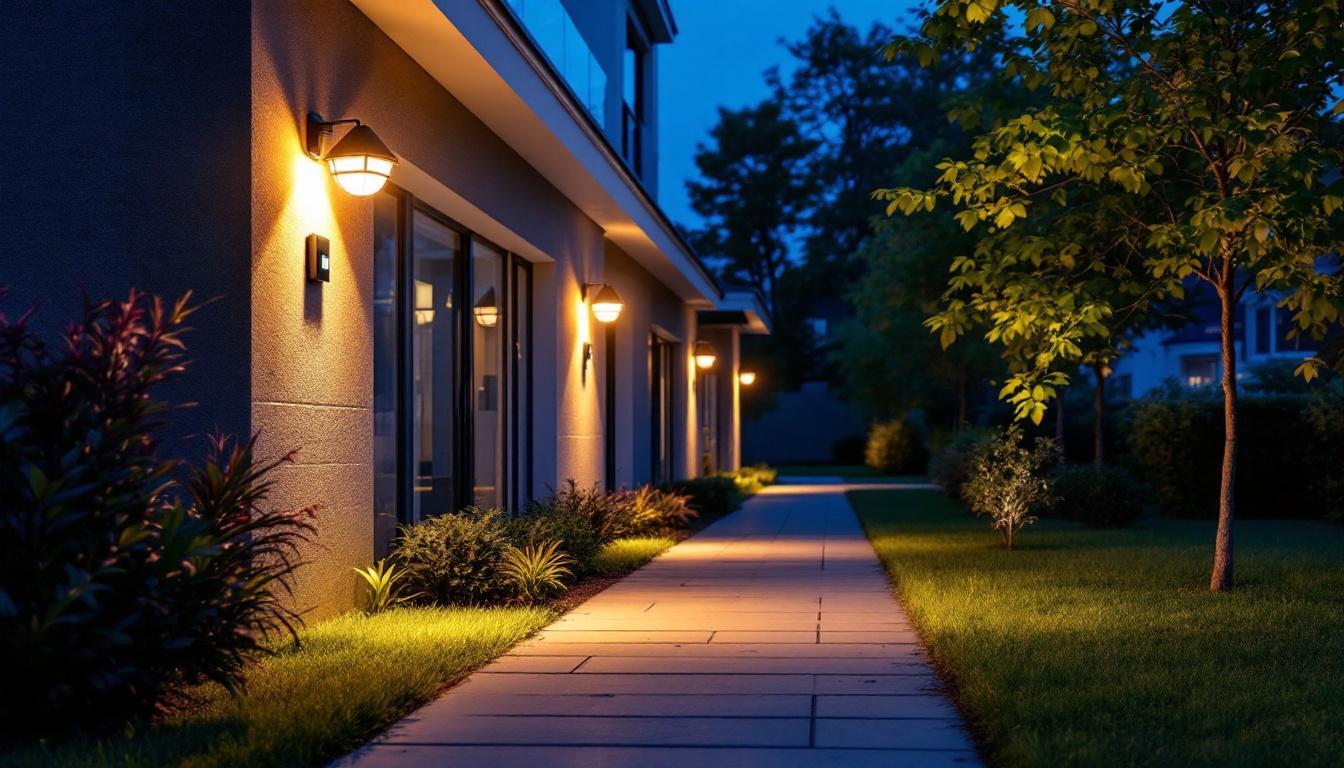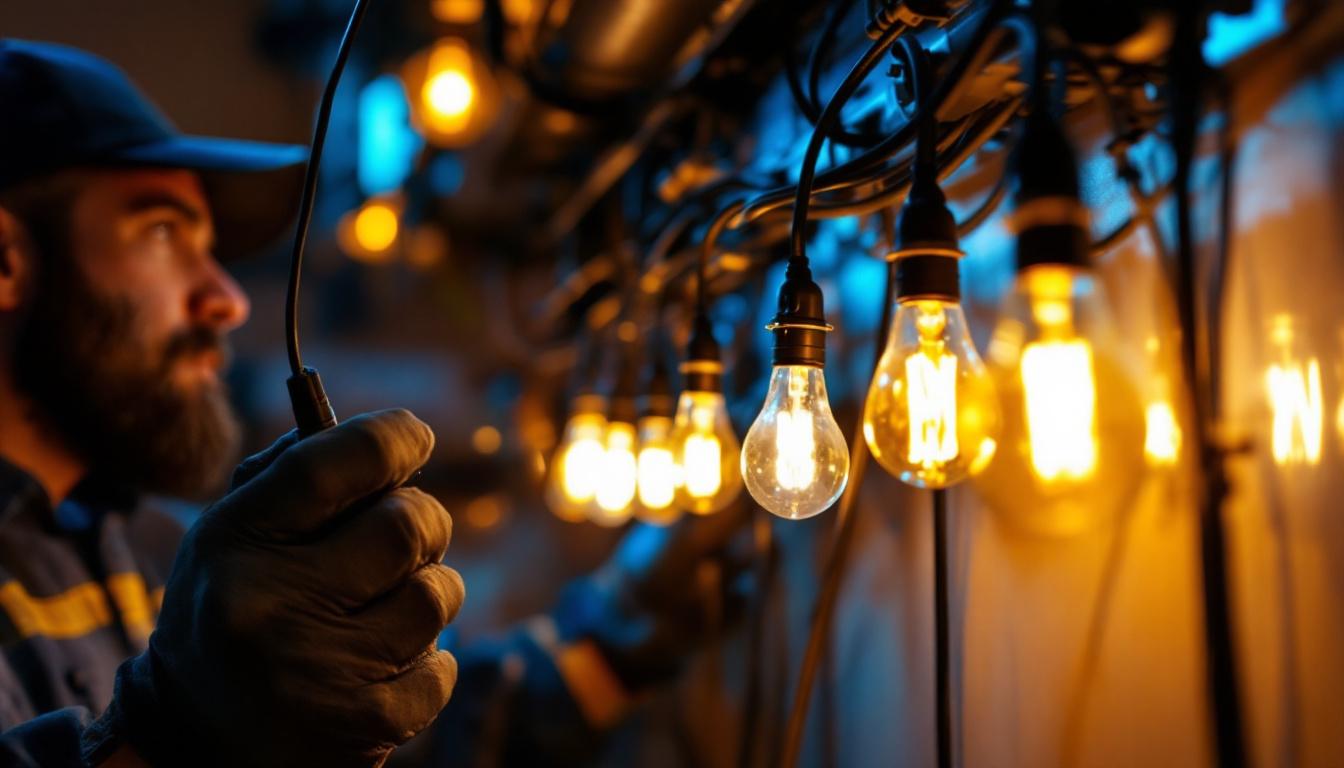
As outdoor security becomes increasingly important for both residential and commercial properties, lighting contractors play a crucial role in ensuring safety and visibility. One of the most effective solutions in this realm is outdoor security lighting equipped with motion sensors. This guide aims to assist lighting contractors in selecting the right motion sensor lighting systems, considering various factors that contribute to their effectiveness and reliability.
Motion sensor technology has evolved significantly over the years, offering various options for outdoor security lighting. These systems are designed to detect movement and automatically activate lights, providing illumination when it is needed most. Understanding the different types of motion sensors is essential for contractors looking to recommend the best solutions to their clients.
There are primarily three types of motion sensors used in outdoor security lighting: passive infrared (PIR), microwave, and dual technology. Each type has its unique advantages and disadvantages, making them suitable for different applications.
PIR sensors are the most common choice for outdoor lighting. They detect changes in infrared radiation, which is emitted by moving objects, primarily warm bodies. These sensors are energy-efficient and effective for detecting motion within a specific range. Their simplicity and reliability make them a go-to option for residential properties, where they can be strategically placed to cover entryways and driveways.
Microwave sensors, on the other hand, emit microwave signals and detect motion by measuring the frequency changes in the reflected waves. They can cover a larger area and penetrate obstacles, making them ideal for complex outdoor environments. This capability allows them to be used in settings such as parking lots or commercial properties, where wide coverage is necessary. Furthermore, microwave sensors are less susceptible to environmental factors like wind and rain, ensuring consistent performance throughout the year.
Dual technology sensors combine both PIR and microwave technologies, offering enhanced reliability and reducing the chances of false alarms. By requiring both types of detection to trigger the lights, these sensors minimize the risk of activation due to non-threatening movements, such as small animals or swaying branches. Understanding these options allows contractors to tailor their recommendations based on the specific needs of their clients.
When selecting outdoor security lighting with motion sensors, several key features should be taken into account. These include detection range, sensitivity settings, and adjustable time delays. A longer detection range is often preferable, especially for larger properties, while adjustable sensitivity settings allow for customization based on the environment. For instance, in areas with frequent foot traffic, a lower sensitivity setting may be beneficial to prevent constant triggering.
Additionally, time delay settings determine how long the lights remain on after detecting motion. This feature can be crucial for conserving energy while still providing adequate security. Contractors should also consider the weather resistance of the fixtures, ensuring they can withstand various outdoor conditions. Moreover, the installation process is another critical aspect; some motion sensor lights are designed for easy DIY installation, while others may require professional assistance. Understanding the installation requirements can help contractors guide their clients effectively, ensuring that the chosen system is not only functional but also seamlessly integrated into the property’s design.
Integrating motion sensor lighting into outdoor security systems offers numerous benefits. These advantages not only enhance safety but also improve energy efficiency and user convenience.
The primary benefit of motion sensor lighting is the enhanced security it provides. By illuminating dark areas when motion is detected, these systems deter potential intruders and provide peace of mind for property owners. The sudden burst of light can startle intruders, often causing them to flee the scene.
Moreover, motion sensor lights can be strategically placed to cover vulnerable areas, such as entryways, driveways, and backyards, ensuring comprehensive surveillance of the property. This proactive approach to security not only protects the home but also serves as a visual deterrent, signaling to would-be intruders that the property is monitored. Additionally, many systems can be integrated with home security cameras, allowing homeowners to capture footage of any suspicious activity, further enhancing their security measures.
Energy efficiency is another significant advantage of motion sensor lighting. Traditional outdoor lights often remain on all night, consuming unnecessary energy. In contrast, motion sensor lights only activate when needed, significantly reducing energy consumption and costs.
This feature is particularly appealing to environmentally conscious clients looking to minimize their carbon footprint while maintaining security. Additionally, many modern motion sensor lights utilize LED technology, further enhancing energy efficiency. LEDs not only consume less power but also have a longer lifespan compared to traditional bulbs, reducing the frequency of replacements and contributing to lower waste. Furthermore, some advanced models come equipped with adjustable sensitivity settings and timers, allowing users to customize their lighting system to suit their specific needs and preferences, ensuring optimal performance without excessive energy use.
Proper installation is vital for the effectiveness of outdoor security lighting with motion sensors. Lighting contractors must consider several factors during the installation process to ensure optimal performance.
Choosing the right location for motion sensor lights is critical. They should be positioned to cover key areas while avoiding obstructions that could hinder their effectiveness. For instance, placing lights too close to walls or trees may limit their detection range.
Contractors should also consider the height at which the lights are mounted. Typically, mounting them at a height of 8 to 10 feet provides an optimal balance between coverage and sensitivity. Additionally, ensuring that the sensors are not facing direct sunlight or heat sources can prevent false triggers.
Furthermore, it is beneficial to assess the specific movement patterns around the property. For example, if there are frequently used pathways or driveways, placing lights to illuminate these areas can enhance safety and security. Using multiple lights strategically can create overlapping coverage zones, ensuring that no blind spots are left unmonitored. This layered approach not only deters potential intruders but also provides a sense of security for residents.
Another crucial aspect of installation is the wiring and power supply. Contractors must ensure that the wiring is adequately protected from the elements and that the power supply is sufficient to support the lighting system. In some cases, solar-powered options may be suitable, especially for remote locations without easy access to electrical outlets.
It is also important to follow local building codes and regulations during installation to ensure compliance and safety. Proper grounding and circuit protection are essential to prevent electrical hazards. Additionally, contractors should consider the potential for future upgrades or expansions of the lighting system. Installing a more robust power supply or conduit can facilitate the addition of more lights or features, such as timers or smart home integration, without the need for extensive rewiring later on.
Moreover, the choice of wiring materials plays a significant role in the longevity and reliability of the system. Using weather-resistant cables and connectors can help prevent corrosion and ensure that the system remains functional in varying weather conditions. This attention to detail not only enhances the durability of the installation but also minimizes maintenance needs over time, allowing homeowners to enjoy peace of mind with their outdoor security lighting.
Once installed, outdoor security lighting systems require regular maintenance to ensure they function effectively. Lighting contractors should educate their clients on the importance of routine checks and troubleshooting common issues.
Regular maintenance includes cleaning the fixtures to remove dirt and debris that may obstruct the sensors. Dust accumulation can significantly reduce the effectiveness of motion detection. Additionally, checking the alignment of the sensors periodically ensures they are still positioned correctly to detect motion.
Contractors should also advise clients to replace bulbs as needed, particularly if they are using traditional incandescent lights. LED options typically have a longer lifespan, reducing the frequency of replacements.
Common issues with motion sensor lighting systems include false alarms, lights not turning on, or lights remaining on continuously. Contractors should be prepared to troubleshoot these problems. For instance, false alarms may occur due to pets or passing vehicles, and adjusting the sensitivity settings can help mitigate this issue.
If lights fail to activate, checking the power supply and ensuring the sensors are clean and unobstructed can often resolve the problem. In cases where lights remain on continuously, it may be necessary to adjust the time delay settings or check for any wiring issues.
With numerous options available in the market, selecting the right outdoor security lighting products with motion sensors can be daunting for contractors. However, by focusing on quality and reliability, contractors can ensure they provide the best solutions to their clients.
When choosing products, it is essential to consider the reputation of the manufacturer. Established brands with a history of producing reliable lighting solutions are often a safer choice. Reading customer reviews and seeking recommendations from other contractors can provide valuable insights into the performance of specific products.
Additionally, looking for products that come with warranties can offer peace of mind, as they indicate the manufacturer’s confidence in their product’s durability and performance.
While budget considerations are essential, contractors should prioritize quality over cost. Cheaper options may save money upfront but can lead to higher maintenance costs and replacements in the long run. Investing in higher-quality products can result in better performance and greater client satisfaction.
Contractors should also consider the total cost of ownership, which includes installation, maintenance, and energy consumption over the product’s lifespan. This perspective can help clients make informed decisions that align with their long-term goals.
Outdoor security lighting with motion sensors is an invaluable addition to any property, offering enhanced security and energy efficiency. For lighting contractors, understanding the technology, installation considerations, and maintenance requirements is crucial for providing effective solutions to clients.
By carefully selecting the right products and educating clients on their operation and maintenance, contractors can build trust and establish long-term relationships. As the demand for outdoor security solutions continues to grow, staying informed about the latest trends and technologies will ensure contractors remain competitive in the industry.
Ready to elevate your outdoor security lighting projects with the best in class motion sensor technology? Look no further than LumenWholesale for all your lighting needs. We provide contractors with exceptional, spec-grade lighting products at the most competitive wholesale prices. Say goodbye to local distributor markups and hello to our curated selection that meets rigorous industry standards. Plus, enjoy the convenience of free shipping on bulk orders, ensuring you get the high-performance lighting your projects deserve at the best value. Don’t compromise on quality or cost—Wholesale Lighting at the Best Value is just a click away. Choose LumenWholesale for quality, affordability, and convenience in one seamless experience.

Discover the latest trends in LED light panels that every lighting contractor needs to know.

Discover why bright flood lights are indispensable for lighting contractors.

Explore the key challenges lighting contractors face when dimming incandescent bulbs, from compatibility issues to energy efficiency concerns.

Discover the essential role 4 ft LED light fixtures play in modern lighting projects.